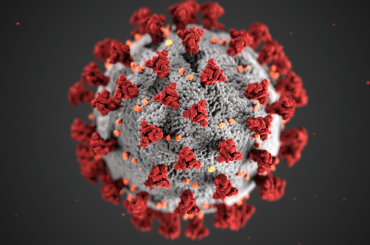This story from Owen Zupp on the Australian Air Force Cadets first appeared in the May 2019 edition of Australian Aviation.
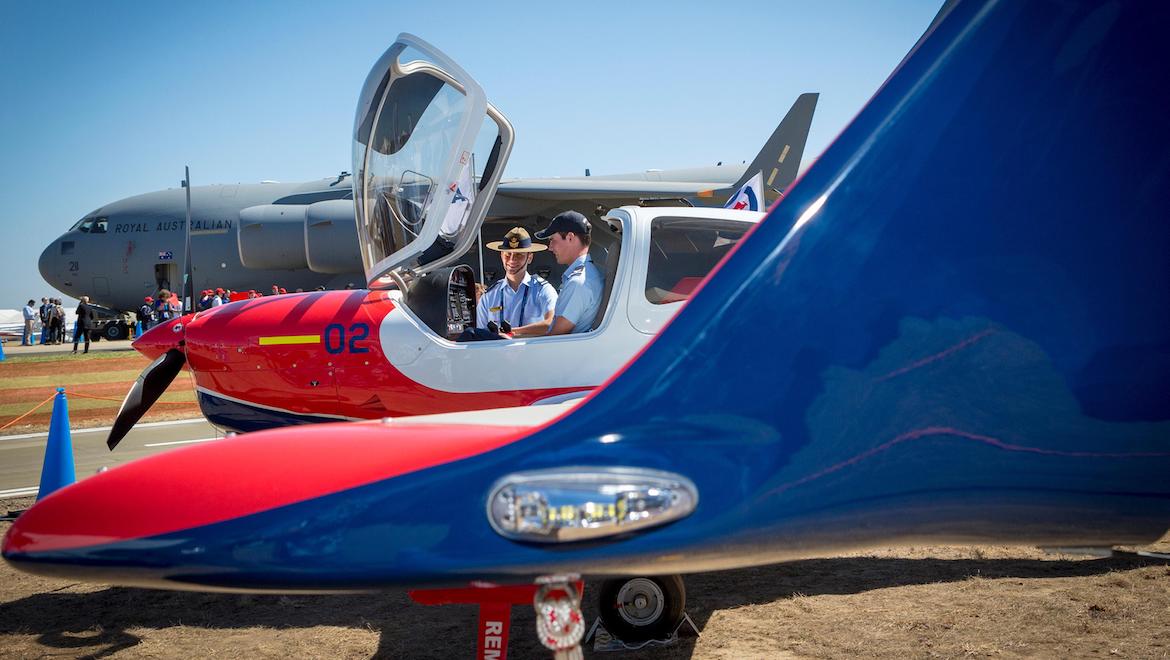
The sound of the Royal Australian Air Force’s (RAAF) old and new frontline fighters rains down through the roof of the marquee-come-mess where military personnel are seated for lunch. The FA-18 Hornet flying overhead in company with the F-35 Lightning II represents a changing of the guard. However, there is also generational change taking place at the grass roots in the form of the Australian Air Force Cadets (AAFC). And the Director General Cadets – Air Force, Air Commodore Gary Martin, is now the RAAF officer tasked with making it happen.
A proud heritage
Known previously as the Air Training Corps (ATC), the AAFC dates back to 1941 when it came into being and, as part of the Air Force Reserve, served as a feeder organisation for the wartime RAAF. Post-war, the ATC was scaled back and described as an “air youth movement” with cadets no longer obliged to join the RAAF.
Over nearly eight decades, the youth organisation has changed in many ways and even faced the challenge of disbandment in 1975. Reforming in 1976 as the AirTC, the organisation welcomed the first girls to its ranks in 1982 and continued to grow in stature before becoming known as the AAFC in 2001.
Across the years, the AAFC has undertaken a broad range of activities from aviation and service knowledge to fieldcraft skills and parade bands. Cadets had the opportunity to attend annual General Service training (GST) camps to further improve their skills, while promotional camps sought to grow their leadership qualities and facilitate a progression through the ranks.
Central to the AAFC had always been a theme of air mindedness and, in the past, this had been traditionally put into practice through flights on military aircraft during camps or – for a fortunate number – flight training in their own right. However, over time, the ability for cadets to experience time aloft in a RAAF aircraft became more difficult to obtain while flying training could only accommodate a relatively small number of cadets.
Flying scholarships for cadets were first sponsored by the Air Force in the 1960s before, in 2009, the then Chief of the Air Force (CAF), Air Chief Marshal Mark Binskin, reintroduced the Air Force Scholarship program for both gliding and powered flying disciplines.
In 2013, under the then Chief of Air Force Air Marshal Geoff Brown, a plan was conceived to regain the practical element of flight within the AAFC. In 2014, the Australian Air Force Cadets National Aviation Centre opened at Bathurst, and with the arrival of new gliders the 8,000 AAFC cadets once again had their eyes firmly set to the skies.
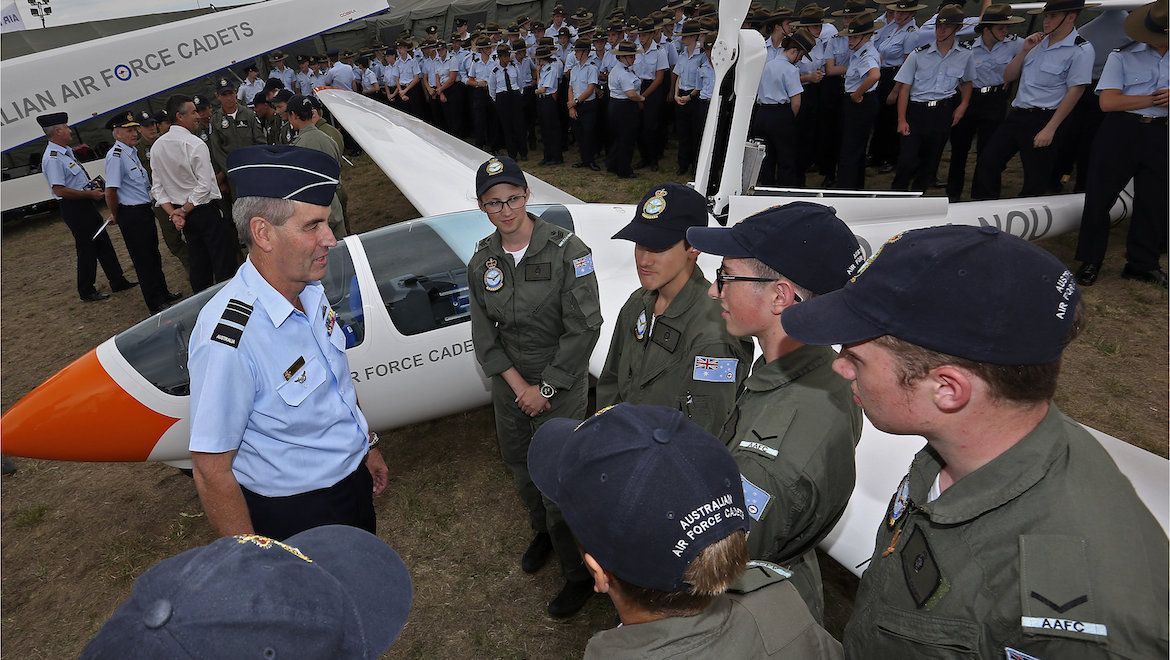
Taking flight
The opening of the $5 million AAFC National Aviation Centre at Bathurst was a major step forward as it also marked the unveiling of the first of the AAFC’s 22 new gliders. The official presentation took place at the Avalon Airshow in 2015 when Darren Chester, then Parliamentary Secretary to the Minister for Defence, and CAF Air Marshal Brown presented a new ASK-21 Mi self-launching glider. Already by that stage, seven ASK-21 Mi’s and eight DG 1001 Club gliders were flying with AAFC units across Western Australia, NSW, Queensland and South Australia.
While the gliding operation was proving highly successful, the nature of unpowered flight meant that its operation was effectively tethered to a radius surrounding its bases across Australia. Additionally, a flight in a glider can vary in duration and nature, purely based upon the environmental elements in play on any particular day. Consequently, one cadet may have a significantly different experience to another, simply because of the presence or absence of thermals.
Recognising this, and working with the previous Director General Cadets, Air Commodore Terry Delahunty, AAFC Commander, Group Captain (AAFC) Mark Dorward, and the Officer Commanding of the Aviation Operations Wing, Wing Commander (AAFC) Steve Pepper, set about developing a new powered flying operation.
The vision was that a fleet of powered aircraft would provide a standardised experience of equal duration for all cadets, and not only at dedicated camps and bases. Powered aircraft could take that opportunity to regional areas where the cadets lived and, in the process, generate interest in the AAFC across the local community. In this way, AAFC flying operations would possess greater visibility with parents, friends and grandparents, allowing them to venture out to the local airport and see first-hand what was involved.
Geographically, with 70 per cent of the cadet population living on the eastern side of the continent, a hub and node plan was devised in the first instance.
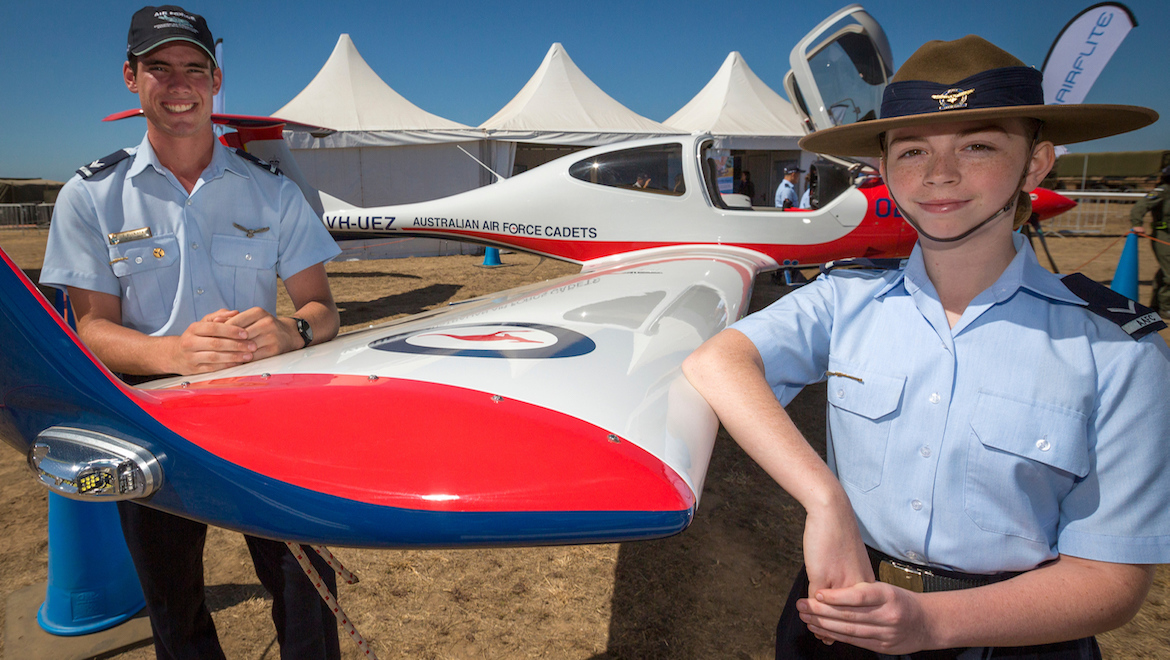
One school
Using the RAAF bases at Point Cook, Victoria, Richmond, NSW and Amberley, Queensland, cadets from the west and Tasmania would be brought to theses bases, rather than decentralising the flying operations.
The model took form in a process that extended over more than two years. There were numerous considerations, not least of which was the choice of aircraft. The contenders were examined from a variety of operational perspectives and ultimately the decision went to the Diamond DA40NG. The DA40NG is constructed of advanced composite materials, is equipped with Garmin G1000 avionics and powered by a turbocharged Mercedes diesel piston engine, offering cadets the latest in technology across a standardised fleet.
Up to this time, the Diamond had only been available in one colour – white. Decals could be added to personalise an aircraft to some degree, but the AAFC became one of the first customers to diverge from the blank canvas. In conjunction with Diamond, a new resin was developed that allowed for any colour to be painted onto the aircraft’s skin. The high visibility scheme sees the scarlet cowling sweeping down the aircraft’s flanks, while the underside is a deep blue, highlighted by the presence of a large “Southern Cross”, reminiscent of the Roulettes’ new PC-21.
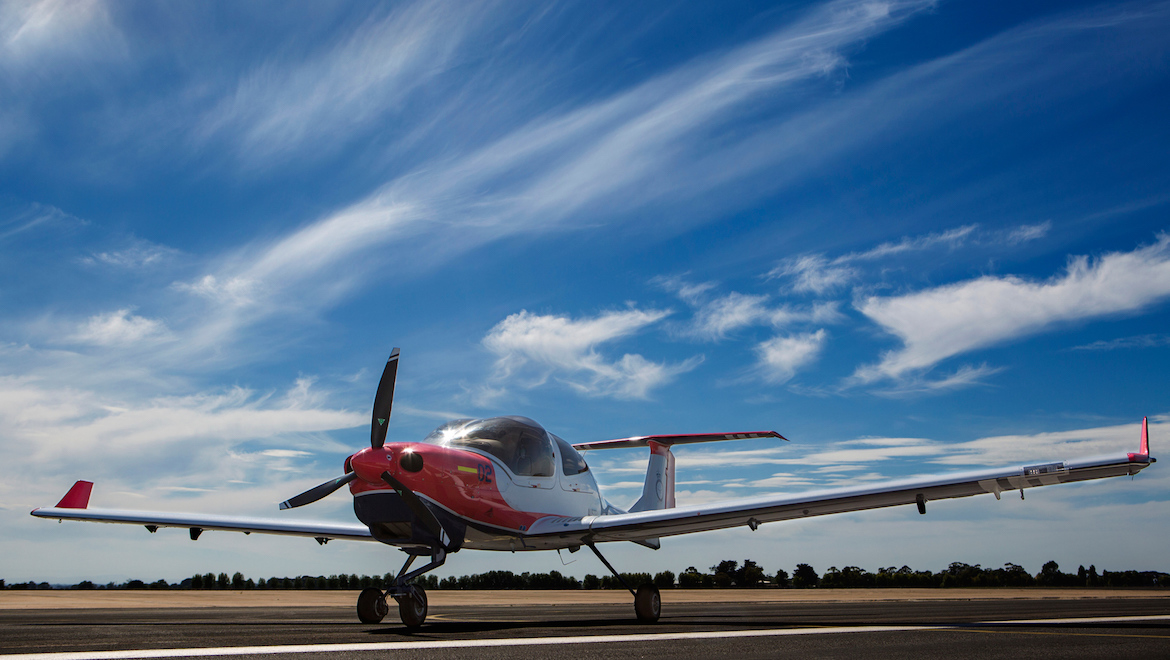
Previously the AAFC had engaged different flight training providers in each state who operated a variety of aircraft in a variety of schemes. The incoming Diamond fleet will be leased from, and fully supported by, a single organisation, Airflite. Airflite has experience with the RAAF as the principal maintenance contractor for the Pilatus PC-9A for the past 30 years and is well versed in the need for standardisation and delivery to the customer, on time and on target.
While the development of the AAFC’s fleet spanned Canada and Austria, WGCDR (AAFC) Pepper and his team in Australia were designing the training system and undertaking a “Proof of Concept” trial in preparation for the aircraft’s delivery. The process was rigorous, with the trial employing two Piper PA28s while setting up a fully compliant CASA Part 141 Flying School, to be known as the Elementary Flying Training School (EFTS). Within the structure of that one school, Group Captain (AAFC) Mark Dorward will serve as the CEO and WGCDR Pepper his deputy, overseeing the three operations in Victoria, NSW and Queensland. Additionally, the operation had to satisfy the Defence Aviation Safety Authority (DASA) and saw WGCDR Pepper making a presentation to a RAAF Airworthiness Board in Canberra.
Always, at the heart of the matter, were the cadets and staff of the AAFC. With a thoroughly designed system in place, the task turned to one of inspiration and bringing the most valued component into the mix – people.
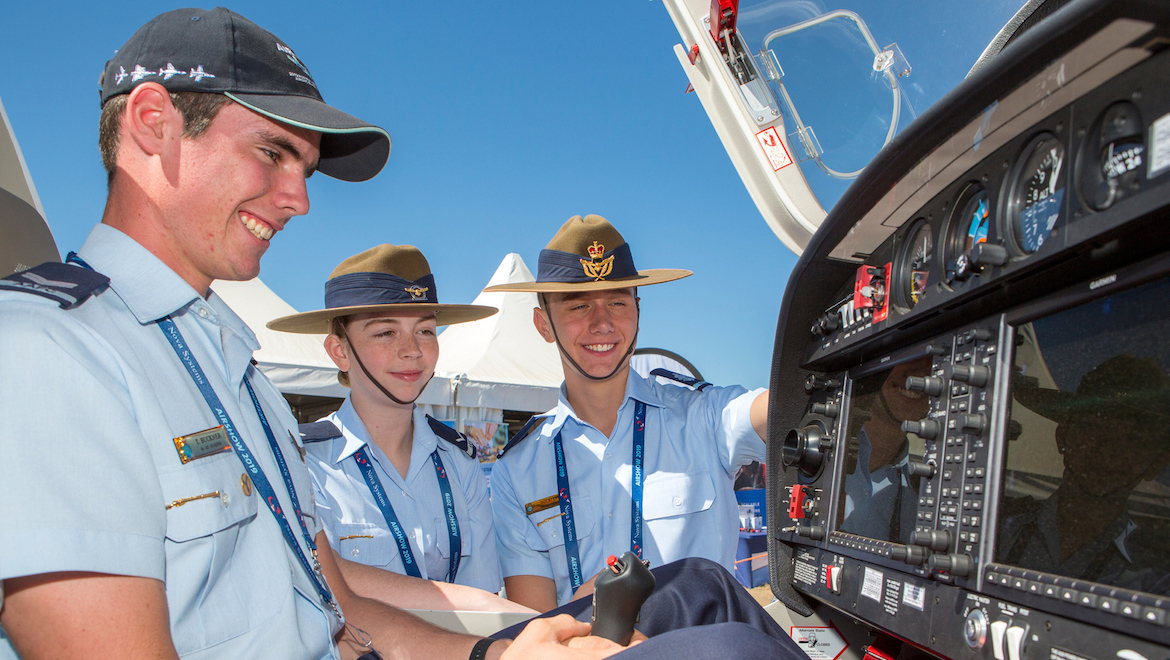
Bringing back the air
Putting it concisely, AIRCDRE Martin, “wants to put the ‘air’ back into the Australian Air Force Cadets”.
Over decades, the AAFC has proven its ability to teach fundamental life skills, ranging from prioritisation to leadership and beyond. The sense of belonging has held steadfast throughout the ranks and the chance to visit RAAF air bases and share barracks or camp beneath the stars has had a positive influence upon Australian youth. However, it was recognised that the actual element of flight and aerospace activities were possibly not as accessible as they had once been.
Additionally, like many organisations and sports, the AAFC was competing for the attention of today’s youth with a wide range of other activities. And even when those youths chose the AAFC, there was evidence that their enthusiasm started to wane as early as the second year. The task was to ignite the spark and keep the flame fanned. The Diamond DA40NG was the asset that could make that happen.
The plan is very specific, with every cadet taking flight within the first three months of joining the AAFC. Known as a Cadet Aviation Experience (CAE), one AAFC pilot will take three cadets aloft for one hour, introducing them to the “air” very early in their timeline. In the second year, each cadet will receive a Pilot Experience, or PEX, which takes the form of a “one-on-one” instructional flight, complete with preflight briefing, flight sequence and debriefing. From these ranks, some candidates will progress to a three-week Solo Flight camp in their third year and, even beyond that, the opportunity to pursue a Recreational Pilots Licence (RPL) will exist.
The flights will be conducted by a qualified commercial pilot and flight instructor, who may be ADF Auxiliary Instructors, AAFC Officers of Cadets (OOC), or a Civilian Instructor Volunteer (CIV). All pilots will have undertaken initial induction and standardisation training with the AAFC at RAAF Base East Sale. Beyond the standard AAFC training, the induction course will include human factors, current RAAF flying training procedures and techniques, familiarisation with the Operations Manual and Safety Policy and the EFTS standardisation program. There will be additional training on fatigue management, refuelling, aircraft systems and procedures, as well as flight time in the Diamond DA40NG. Annually, each pilot will be required to undergo a Standardisation and Proficiency Check.
The goal is that standardisation will exist across all of the pilots, operating a single type of aircraft across all flying operations.
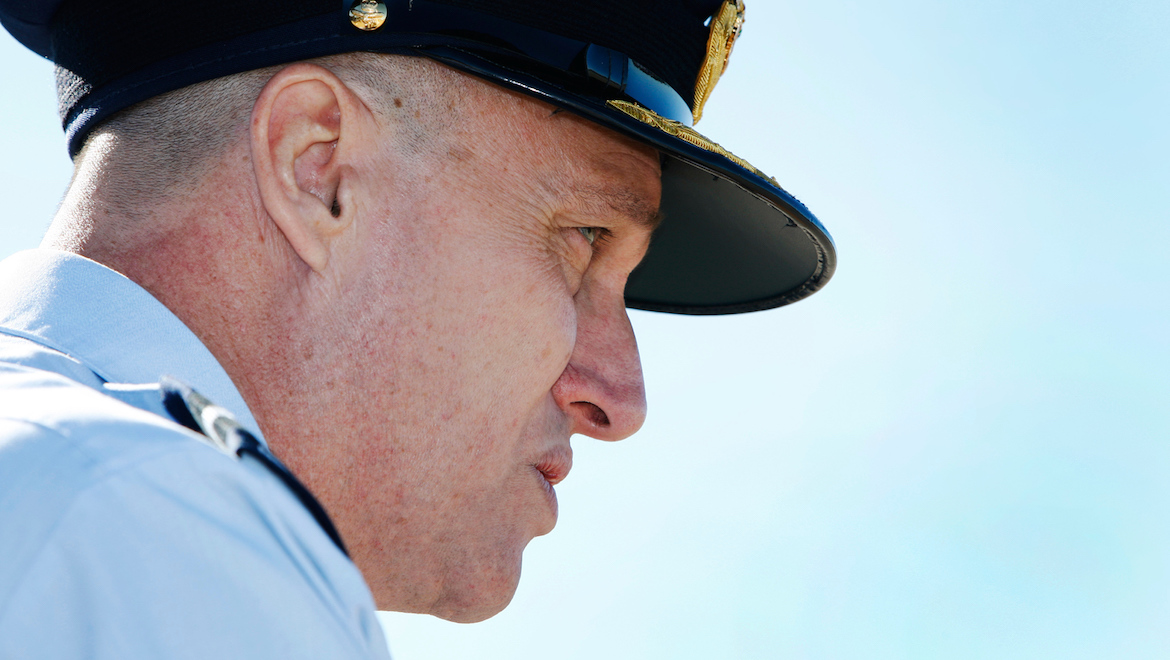
AIRCDRE Martin emphasises that sound selection of the pilots and instructors is vital. Candidates must not only be proficient operators within the organisation but also be able to inspire the cadets with their individual aviation journeys – civil or military. To facilitate this experience, a diverse range of pilots is anticipated, from military aviators to airline captains, charter pilots and everything else in between. And each has a story to tell.
The reach of EFTS will be great and not solely due to the acquisition of new aircraft and a new Part 141 approval. Of pivotal significance is that funding is provided by the RAAF. The ability to participate in a CAE or a PEX is not based on the ability to pay – it is free to the cadet. This breaks down the fiscal barriers which once hampered the opportunity to fly, narrowing the pool to those who could afford it. Not only was this restrictive, but one wonders how many talented young aviators were previously overlooked. GPCAPT Dorward calls these cadets the “Golden Nuggets”. Now, due to the financial support of the RAAF, these nuggets will have the chance to take to the skies. Furthermore, the RAAF support extends even further than EFTS.
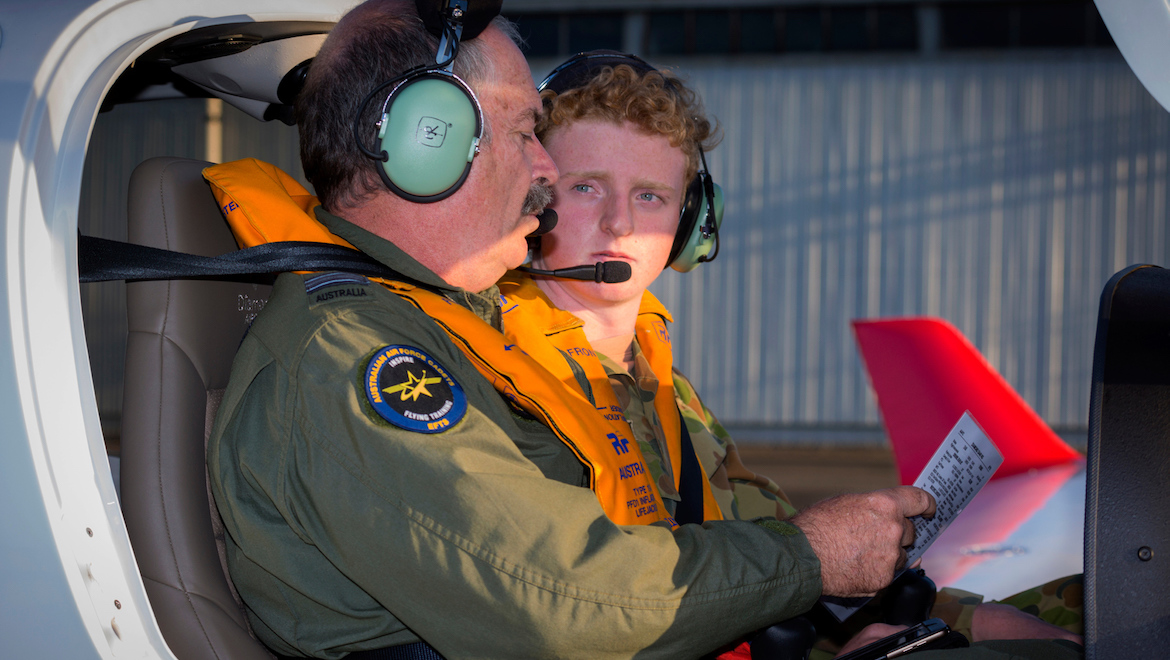
The aerospace factor
From the outset, the commitment and support of the RAAF to the project has been evident. In his video address, the CAF, Air Marshal Leo Davies, could not have been clearer in his intent when he stated that a “fifth generation air force needs to be supported by fifth generation air force cadets who are aviation-focused and built on a foundation of airworthiness and safety”. And in order to achieve that, the AAFC is looking beyond the cockpit, as much as it recognises its importance.
AIRCDRE Martin exudes enthusiasm for the future of the AAFC. He is equally keen to highlight that it is not all about aircraft, preferring to describe the future in terms of aerospace. The future will not only feature those who fly the F-35, but those who support it and the complex systems it employs. There are materials and methods being researched that will undoubtedly change the future faced by today’s AAFC cadets.
A joint program with JAR Aerospace to deliver 3,000 drones to the AAFC to support science, technology, engineering and mathematics (STEM) development was launched at the recent Australian International Air Show at Avalon. Through these unmanned systems, many facets of technology will be open to examination, including robotics, coding, electrics, engineering and fabrication. Combined with the DA40NG, the new equipment being introduced to the AAFC brings with it exposure, training and skills that translate to the broader aerospace industry.
Under the STEM banner, the language is more easily understood and translatable by parents and school career counsellors who have long been at a loss when aviation is raised as a topic. These studies and skills can then be applied to the future development of the industry, whether that’s in Defence, with one of the many contractors that support it, or even through Australia’s burgeoning space industry.
The future of aerospace will be far reaching, with the evolution of jobs that don’t exist today. What is needed is a dynamic and adaptable cohort that is conversant with new technologies. The AAFC’s approach to aerospace is set to fill some of that need.
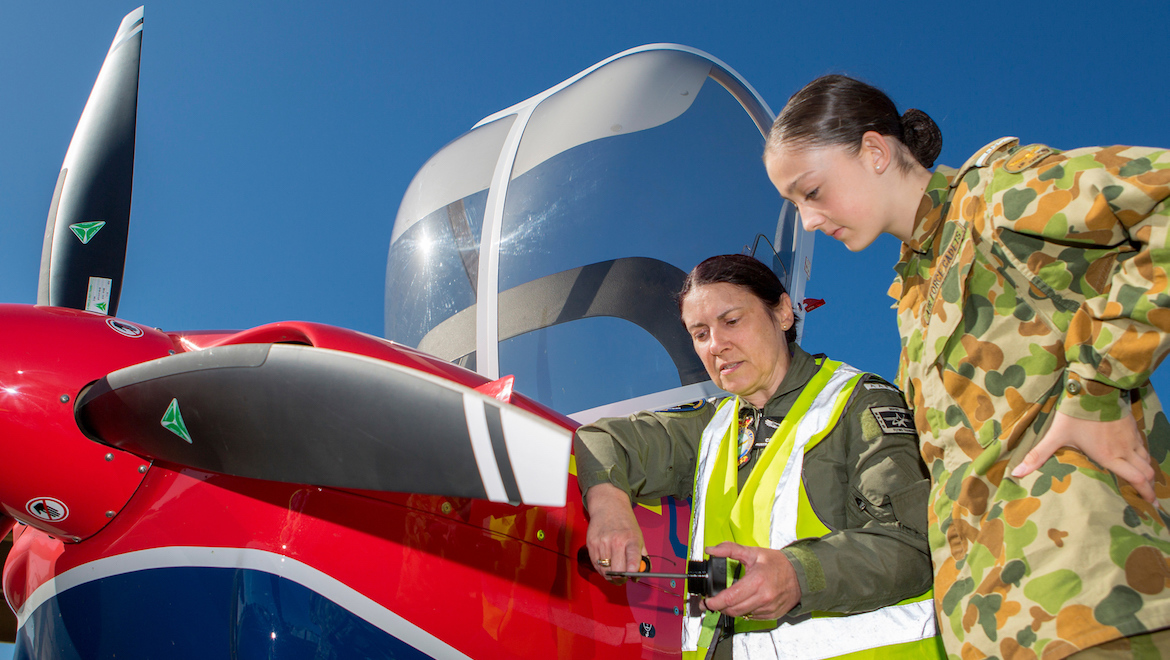
Closing the gap
The value of the Australian Air Force Cadets to the community has been a benchmark since 1941. Not merely as a potential source of recruits for the RAAF, but as a means of developing quality Australian citizens and in this role it has been proven time and again.
With 8,000 cadets and staff spread across 175 squadrons nationwide, the AAFC undoubtedly offers a foundation for this support to occur – and not only for the RAAF but the aerospace industry. Still, it is the RAAF that is investing $27 million annually into this Australian youth organisation to inspire them and prepare them for the challenges of tomorrow through training, aircraft, education and unmanned aerial systems. Through these tools, flight is not something to be thumbed through in a fading book, but a tangible link to a future that seems only limited by the imagination.
When the new Diamond DA40NGs commence operations, they will do so under a unique RAAF callsign – “Astra”. It means “to the stars”. One cannot help but think that the future of the AAFC may be on the same trajectory.
VIDEO: An April 2019 video on the Australian Air Force Cadets pilot recruitment from the organisation’s YouTube channel.
This story first appeared in the May 2019 edition of Australian Aviation. To read more stories like this, become a member here.

